Manuscripts
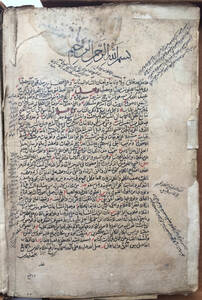
ʿUbayd Allāh ibn Masʿūd al-Maḥbūbī, died 746 [1346/1347]
Kitāb al-Tawḍīḥ fī Ḥall Ghawāmiḍ al-Tanqīḥ [wa huwa Sharḥ al-Tanqīḥ] (Book of Elucidation on Solving the Ambiguities of the Revision [and this is the commentary on Tanqīḥ al-uṣūl by the same author])
Manuscript in Arabic
Copied by Muhammed el Hac Ilyas in Mahrusa [Istanbul], 867 [1462]
212 pp., 27 x 18 cm
unbound with remnants of original leather cover
Sadr al-Shari'a, a Bukharan Hanafi theologian and jurist who lived in Bukhara and Herat in the post-Mongol period, attempted to synthesize the prevalent Ash'ari theological tradition with the Central Asian Hanafi juristic tradition. He focused in particular on the Hanafi Usul work of al-Pazdawi (d. 1089), on the one hand, and the two most influential theological works of the period, the al-Mukhtasar (The Abbreviated) of lbn al-Hajib (d. 1249) and al-Mahsul (The Harvest) of al-Razi, on the other. Many commentaries w...
more »
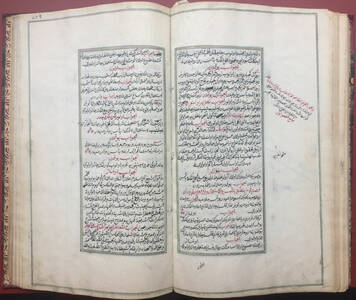
Ebu'l-Fazl Abdullah, died 1156 [1743]
Behcet ül-Fetâvâ (Collection of Fatwas)
Manuscript in Ottoman Turkish
Copied by El Hac Mustafa bin Ismail, 1169 [1755/56]
268 leaves, 29 x 17.5 cm.
The fatwas of Ebu'l-Fazl Abdullah, also called Abdullah Efendi, was Şeyh ul-Islam of Sultan Mahmud I, are important in that they made possible the reformist developments of the time. Among his fatwas, special mention should be made of his approval of the establishment of the first printing press of Ibrahim Müteferrika. This fatwa can be found on sheet 229b of the manuscript. The word Fatwa carries in it the meaning of consultation. Specifically it refers to an Islamic legal opinion issued by an expert scholar (Mufti) in...
more »

Celâleddin Hızır Hekim Haci Pasa, 740 - 827 [1339 - 1424]
Müntehab-ı Şifâ (Selected Writings on Health)
Manuscript in Ottoman Turkish
Copied 990 [1582]
623 pp., 20 x 15 cm
One of the very early medical works in the Ottoman Empire which consists of three parts: Basic information on healthy living, nutrition, sex; production of medicines (pharmacy); diseases and their treatment. In Turkish medical history, Hekim Haci Pasa is one of the outstanding physicians of the period of Anatolian Principalities. Some refer to him as Ibn Sina of Anatolia. After completing his primary education in Konya, he went to Cairo, the center of learning at the time. Due to a severe illness during his school years in C...
more »
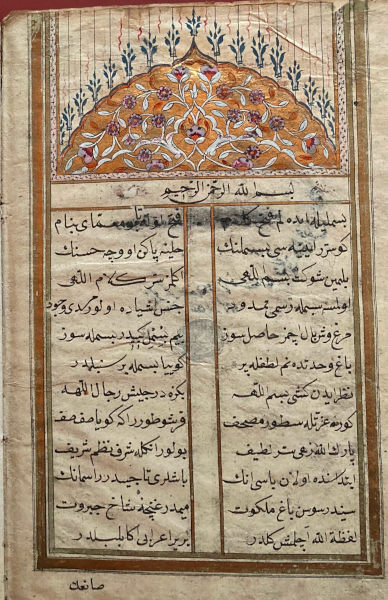
Haqani
Ḥilye-i Ḫāḳānī – About the physiognomy of the Prophet
Manuscript in Ottoman-Turkish. Nasḫī.
23 fol.
No date, approximately second half of 18th century
Contemporary binding
Illumination of the title, citations from al-Shāmāʾil in red Famous and widely read poem by the Ottoman-Turkish poet Ḫāḳānī (d. 1015 H/1606 AD) describing the physiognomy of the prophet Muḥammad. Based on al-Shaqāʾiq al-Nabawiyya by the ḥadīth scholar al-Tirmidhī. Owner’s seal by a certain ʿAbd al-Razzāḳ dated 1197 H. [1782 AD] (“hüve ‘l-Ḫallāḳ - ʿAbd al-Razzāḳ 1197”). Later added on the last folio are instruction and recommendation about how to pray....
more »
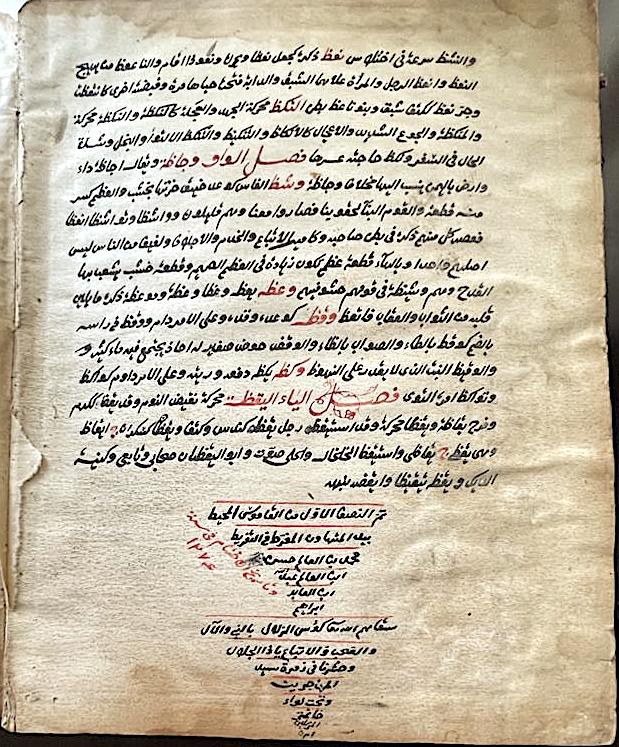
al-Fīrūzābādī [al-Fayrūzābādī], Abū Ṭāhir Majd ad-dīn Muḥammad ibn Yaʿqūb (1329–1414 H)
Al-Qāmūs al-Muḥīṭ (2 volumes)
Fluent naskhī Manuscript in Arabic, no vowel signs.
Copist Muḥammad ibn al-ʿālim Ḥasan ibn al-ʿālim ʿAbdullāh ibn al-ʿālim Ibrāhīm 1276 H (1859 AD)
Vol. 1: 414 leaves,
Vol. 2: 415 leaves at 20 lines each
22 x 17.5 cm Leather covers with flaps
One of the most widely spread Arabic dictionaries in the 15th-19th centuries. Manuscript has a lot of user notes in Ottoman-Turkish from the 19th and 20th centuries, e.g. death or birth of persons related to the owner, date of the enthroning of Sultan Meḥmed Reşād (r. 1909-1918). Al-Fīrūzābādī, a Persian-born lexicographer who was long resident in Baghdad, Damascus and Jerusalem before he settled in Mecca. The first volume includes a colophon giving the name of the copyist, Muḥammad ibn al-ʿālim Ḥasan ibn al- ʿālim ʿAbdull...
more »
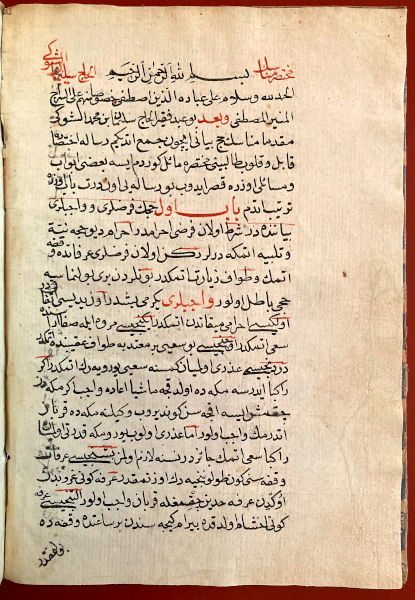
el-Ḥācc Şevkī Süleymām Meḥmed
Mukhtaṣar Manāsik
Elegant naskhī script in Ottoman Turkish without illumination.
Dated 1125 H / 1713 AD
37 leaves at 21 lines
22 x 15.5 cm
Carton binding
...
more »
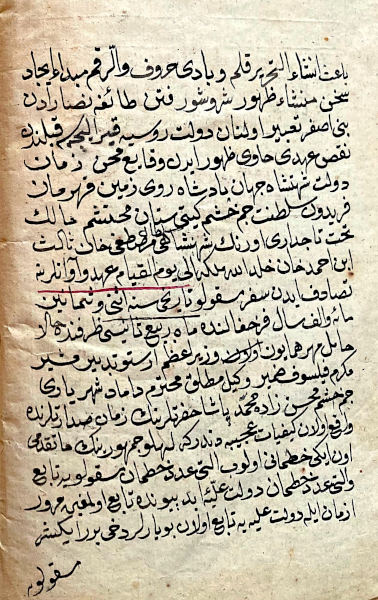
es-Seyyid el-Hācc Yūsuf-i Nādirī
Tārīḫ Nādirī (Ottoman History during the years 1182-1190 H [1768-1776 AD])
Later additions on the last folios, concerning political events in the 1220s and 30s H.
Sketch of a tuġra [Sultan Maḥmūd II.?], probably by other author and in different script with mentioning of 27 Safar 1238 H. as date [1822 AD]. Pencil note indicating that the text concerns the reign of the Grand Vizier Musḥsinzāde Meḥmed Paşa....
more »
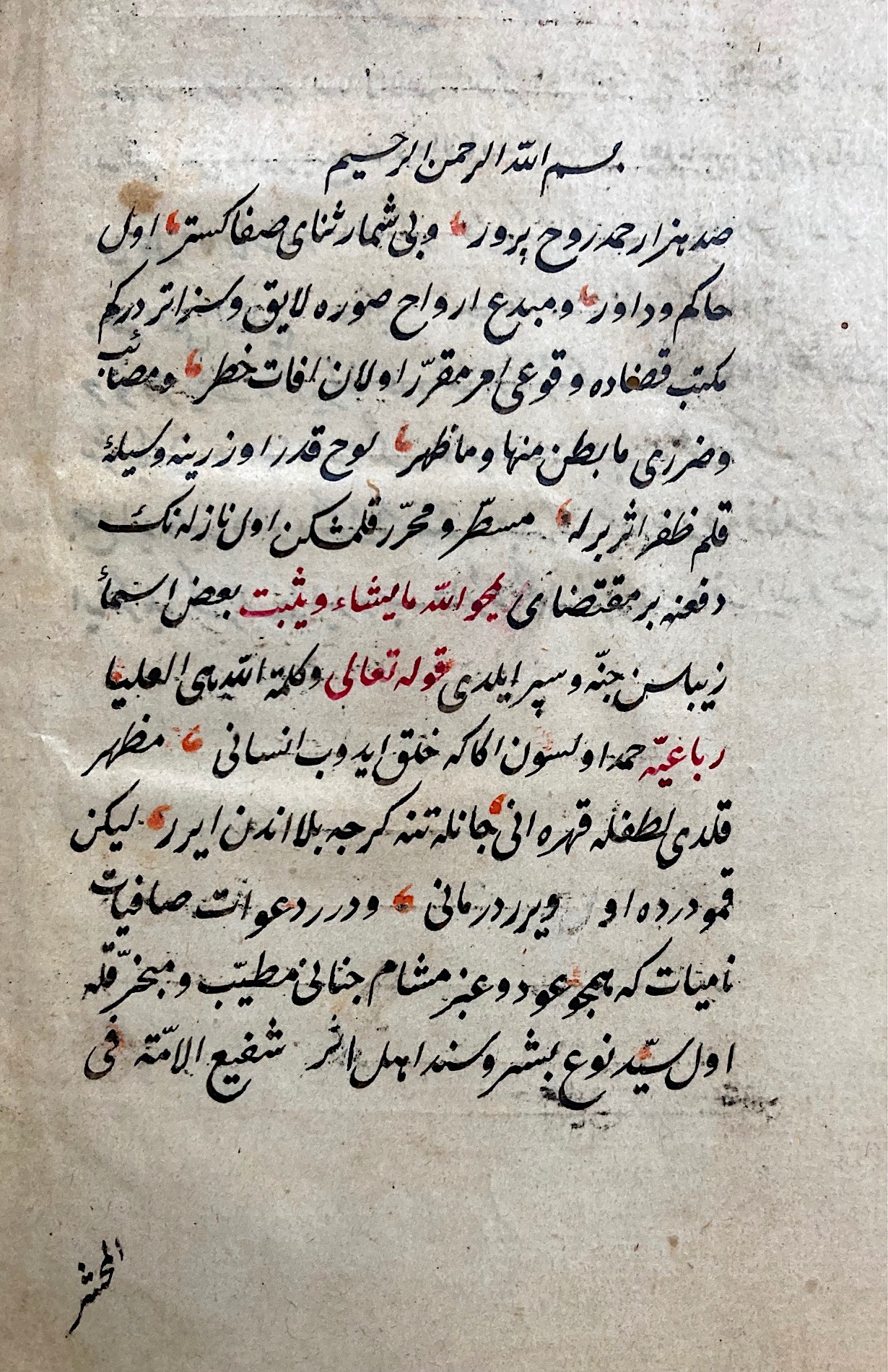
Yemenî Mahmud Efendi
Bahr-i Ali el-müşkülat-i külli kelimati aliyu müşkülat (Hymns of praise for Caliph Ali and his successors, the eleven Imams)
Manuscript in Ottoman Turkish
Copied by Yemenî Mahmud Efendi in Damascus in 1191 H [1777 AD].
94 pp. With 11 full-page havas illustrations , 16 x 12 cm.
Introductory note by the copist: "Al-hakir al-kadir; Mahmud Yemeni had the good fortune to get this copy from a saint when he was in Damascus. This saint had copied it from a manuscript in the treasury of Sultan Shah Mirza in the 841st year of the Hijra. No one who has authority at the highest level in our community is allowed to copy this manuscript." Numerology [number symbolism] is the assignment of meanings to individual numbers or combinations of numbers, whereby the numbers are given a symbolic function tha...
more »
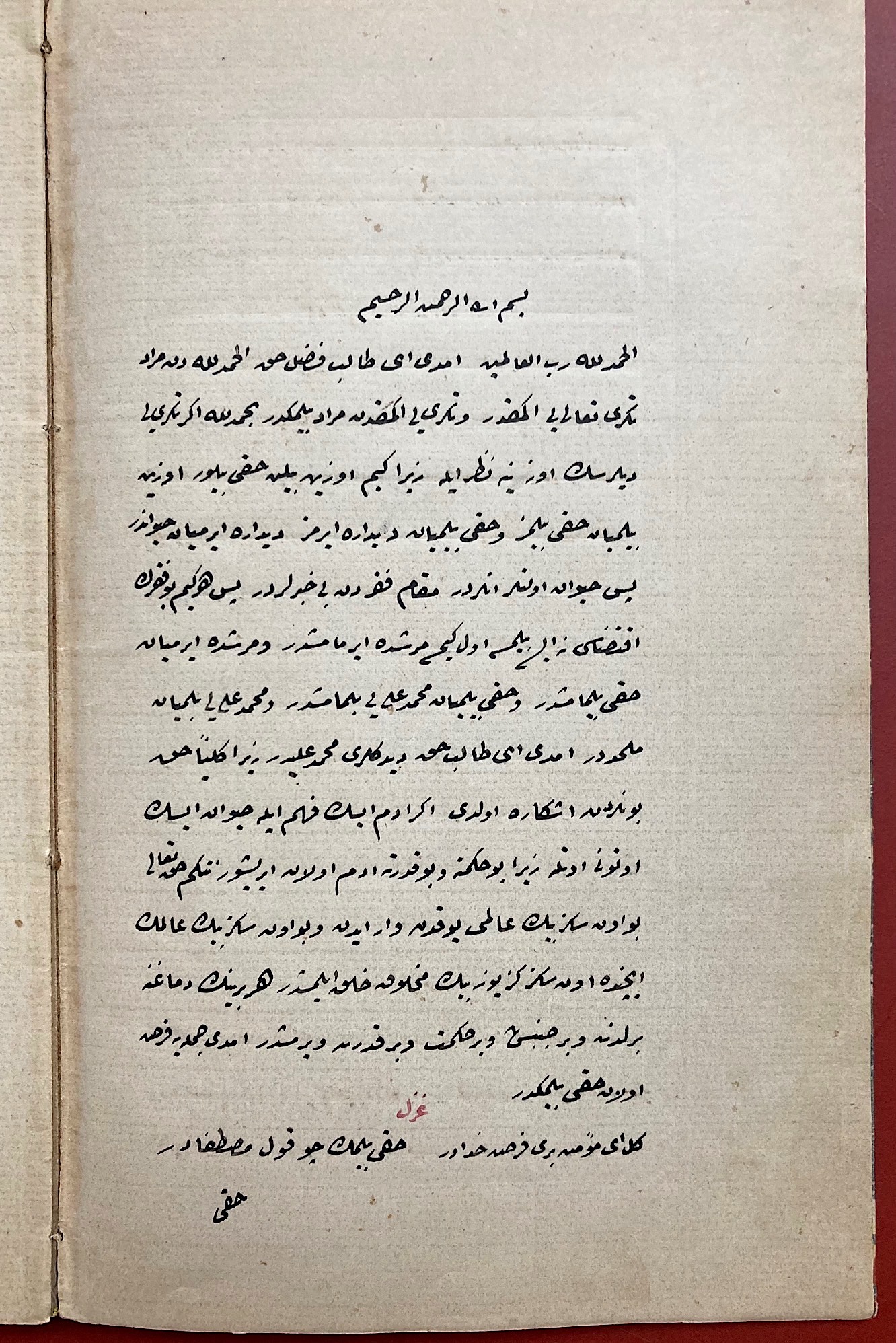
Viranî Baba
Kitab-ı Viranî Baba
Manuscript in Ottoman Turkish, copyist unknown, written 1217 H [1802 AD].
70 pages, 20 x 12 cm.
Marbled cardboard cover with leather spine.
Viranî Baba, an important figure of the Bektashi order, is considered one of the seven great poets of Sufism. He is a mystical poet who deals with the Bektashi teachings in his works. "Kitab-ı Viranî Baba" is one of Virani's most important works. It deals with topics such as religious and moral advice, the Prophet Muhammad, His Holiness Ali, the Twelve Imams and the love of Ahl al-Bayt. Hurufism is a belief system that assigns new meanings to numbers and letters. Many sources indicate that it has influenced Be...
more »
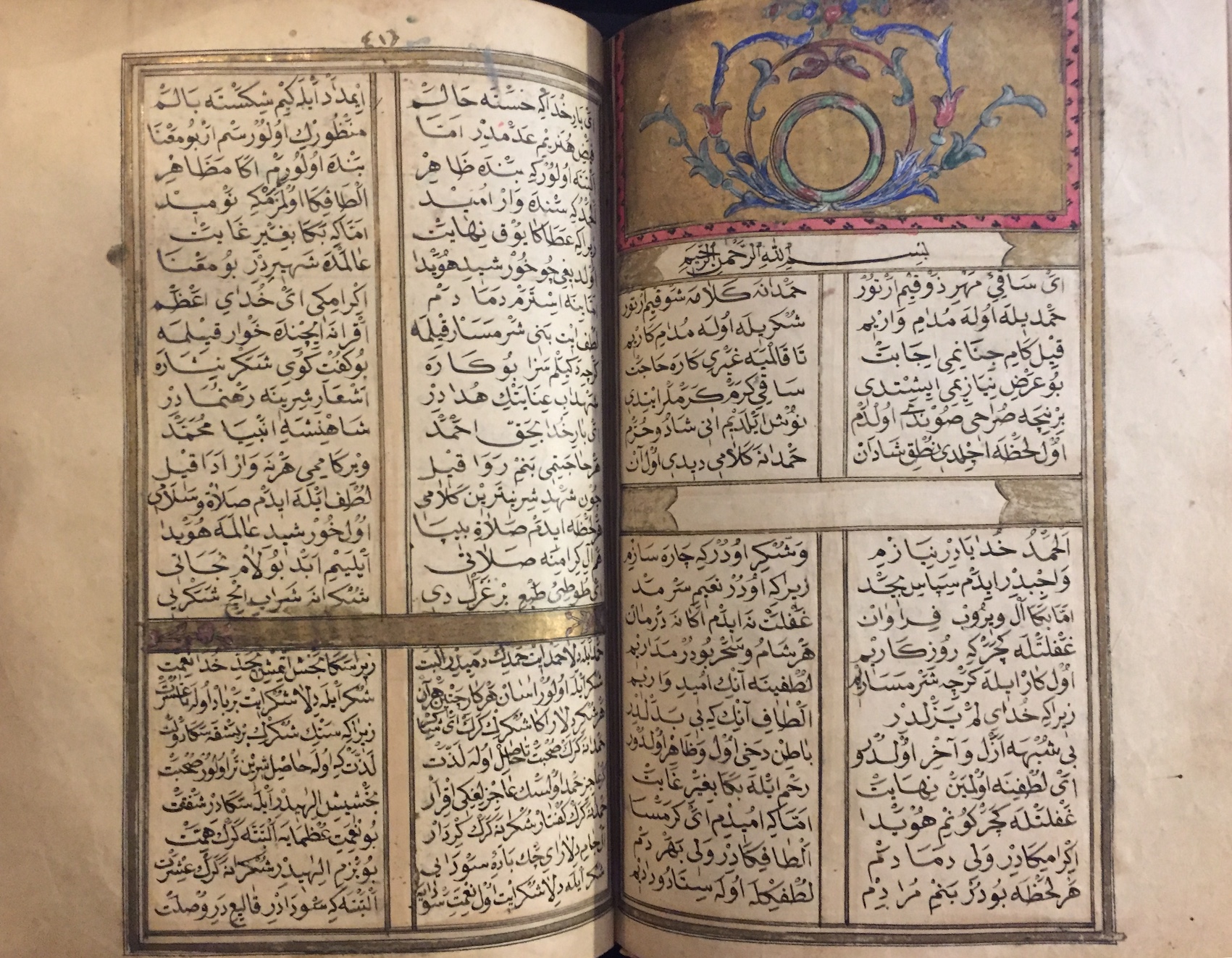
Seyyed Mir Hamza Nigârî, ( 1219 – 1313 H. / 1805 – 1896 AD)
The Complete Works
Manuscripts and Printed Parts in Ottoman Turkish.
Bound in one volume:
1. Dibace/preface, manuscript, 2 pp.
2. Silsila, manuscript, 1 p.
3. Divân-ı Seyyid Nigâri Be-Zeban-ı Türkî and Çaynâme, Istanbul 1302 [1886], Süleyman Efendi Matbaası 366 pp. (with handwritten additions of parts not printed)
4. Nigarnâme, manuscript, author’s copy, 187 pp.
5. Menâkıb-ı Seyyid Nigârî, manuscript, 10 pp.
Mir Hamza Nigari is the most famous mystic in Anatolia and Caucasia in the 19th century. Nigari was born in the town of Zengezur in the Caucasian region of Karaba and received his primary education there. While still young, he moved to Anatolia and joined the smail irvani sect in Amasya. Nigari, who taught mystical principles in Istanbul, Erzurum and Harput, died in Harput and is buried in Amasya. ad 2: Silsila in Sufism is the spiritual chain of a sheikh that connects him to the Prophet Muhammad through previous generations...
more »

Mustafa Haşim Baba, 1130 - 1197 [1718 - 1718]
Anqāʾ Meşrık (The Griffin of the East)
Manuscript in Ottoman Turkish
Copied by Zeynel Abidin Pur Taksir, 1227 [1812]
28 leaves,
17.5 x 12 cm.
Mustafa Haşim Baba whose pseudonym was "Hâşimî" in his poems, was born in Üsküdar, İstanbul in 1130 [1718]. He was the son of the Yusuf Nizâmeddin Efendi , Sheikh of Bandırmalızade Tekkesi (Dervish lodge). Haşim Baba was educated according to the practices of Jalwatiyya orders, after that he inclinated to Bektashism orders and even he was appointed to the post of Dedebabalık. However, neither the Jalwatis nor the Bektashis had accepted him. He died in 1197 [1718]. After his death, the Hasimiyyas, which was establis...
more »
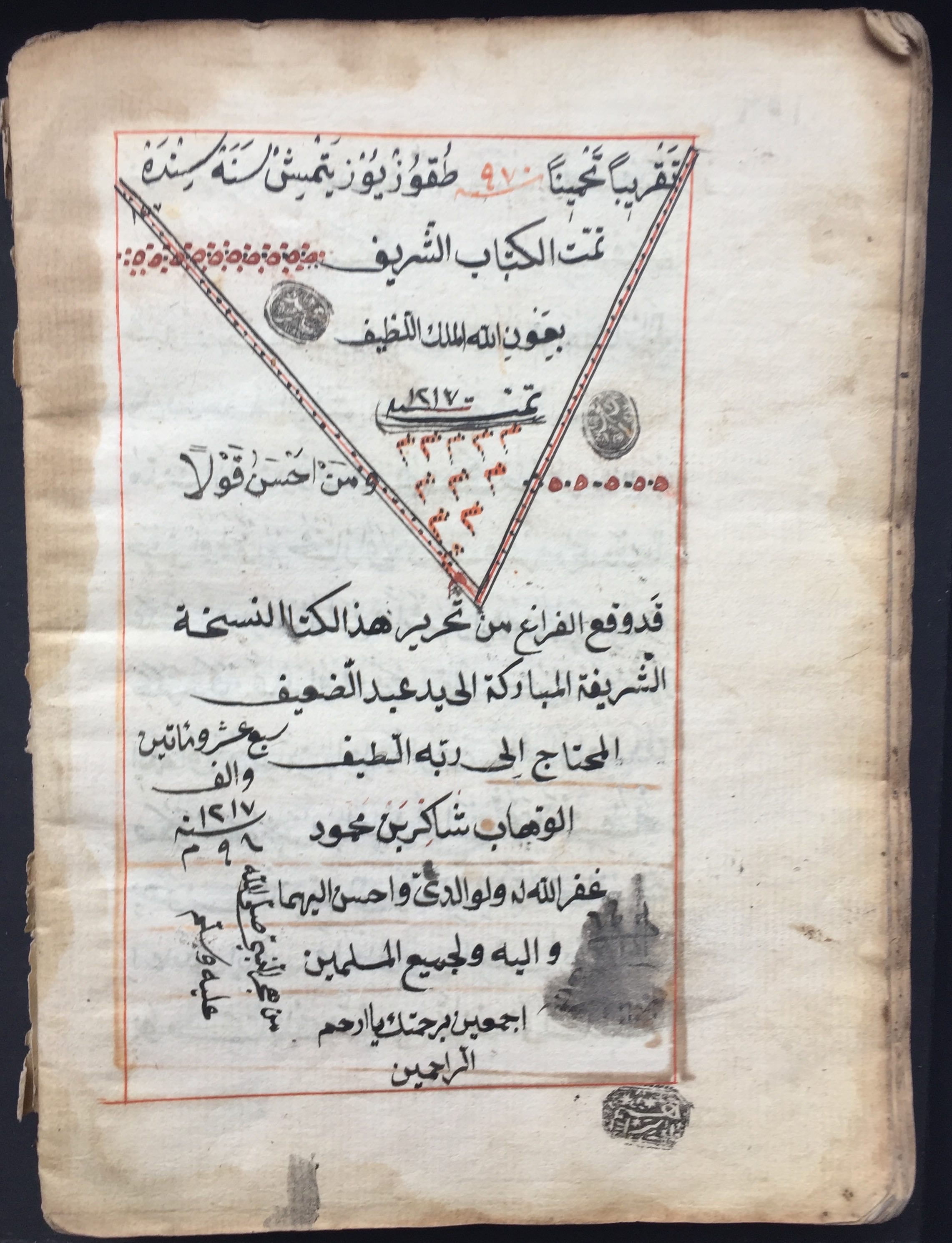
Muhammad Imam Birgivi, Şeyh ‘Aliyyü’s-Sadrî el-Konevî
1) Vasiyetnâme – The Last Will and Testament of Imam Birgivi; and 2) Şeyh ‘Aliyyü’s-Sadrî el-Konevî's commentary on Birgivi's Testament
Two Manuscripts in Ottoman Turkish
(1) Copied by Sakir bin Mahmud, 1217 [1802]
156 leaves, 21 x 15 cm
and
(2) Copied by Ahmed es-Sehid Tahir Hac Mehmed Efendizade, 1133 [1720]
200 leaves, 20 x 13 cm.
ad 1: Muḥammad Imam Birgivi who lived 928 - 980 [27 March 1522 – 15 March 1573] was a Muslim scholar and moralist who lived during the height of the Ottoman Empire and whose texts are used to this day as manuals of spiritual practice throughout the Muslim world. His full name, in Arabic, is Taqī al-Dīn Muḥammad Ibn Pīr ʿAlī al-Birkawī. Born Muḥammad ibn Pīr ʿAlī, in Balikesir, Ottoman Empire, in 1522, Mu ammad was sent to the capital Istanbul to study theology as a young man. He studied law under the chief military judge (ka...
more »
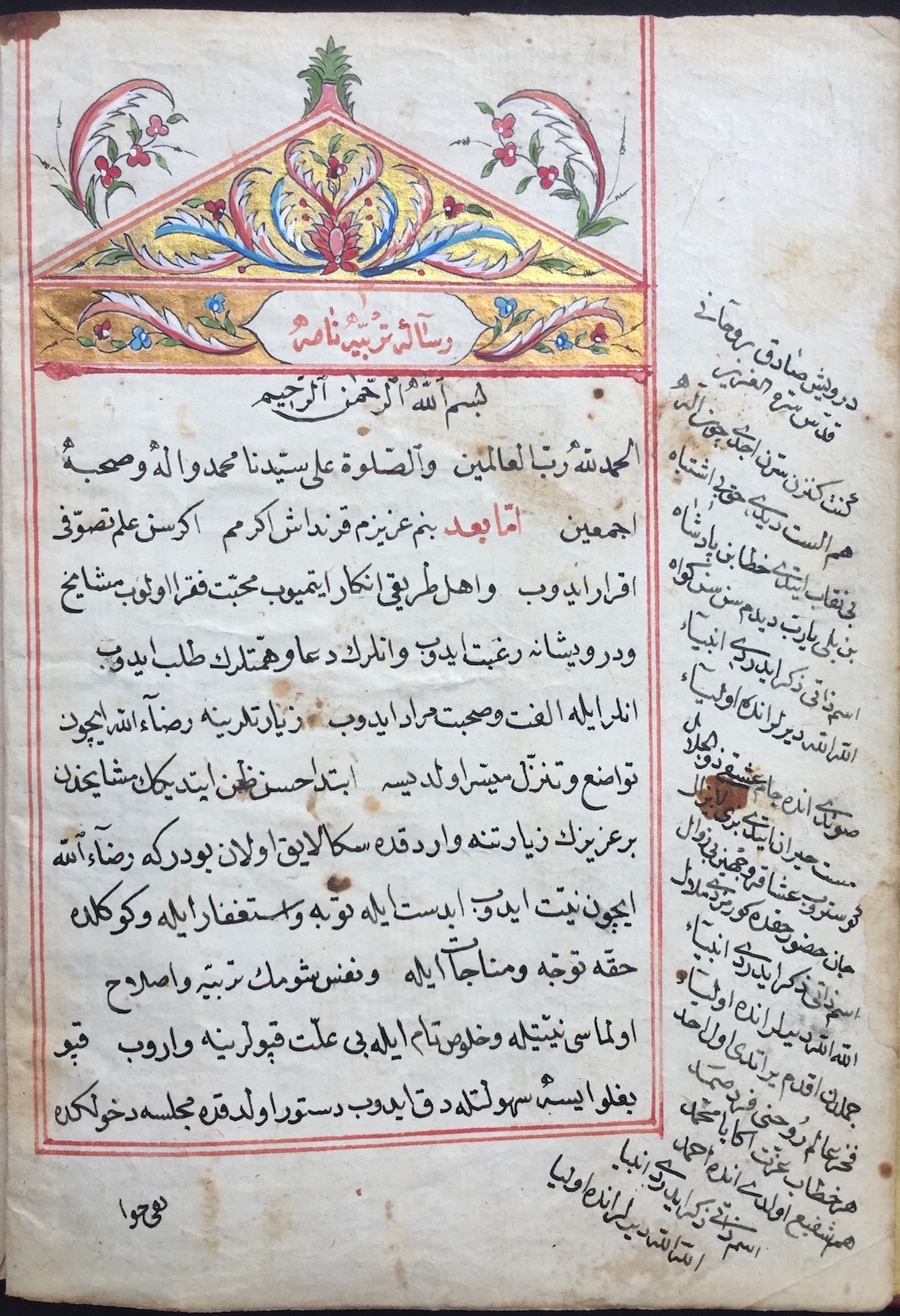
Mehmed Sâdık Erzincânî, 1136 - 1209 [1723 - 1794]
Four Risales and a Letter of Dedication
Manuscript in Ottoman Turkish
4 Risales in 1 Vol. , 27 + 57 + 58 + 19 + 2 = 153 pp.,
19 x 14 cm.
Mehmed Sâdık Erzincânî, also named Muḥammad Ṣādiq al-Arzinǧāni Muftīzāda, Mehmed el-Erzincani, and Muḥammad Ṣādiq Ibn-ʿAbd-ar-Raḥīm al-Muftī. Author of four risales (small texts in the form of a treatise on principles, rules and secrets of the Naqshibendi order. At the end a dedication in the form of a letter to his dervish colleague Mustafa, signed Fukara Muhammad Sadık Erzurumî Derviş Sâdık Erzincânî, 1185 [1771]. 1. Risâle-i Terbiyenâme. Author's copy, dated 1185 [1771], 27 pp. A treatise on Sufi customs, traditions ...
more »



